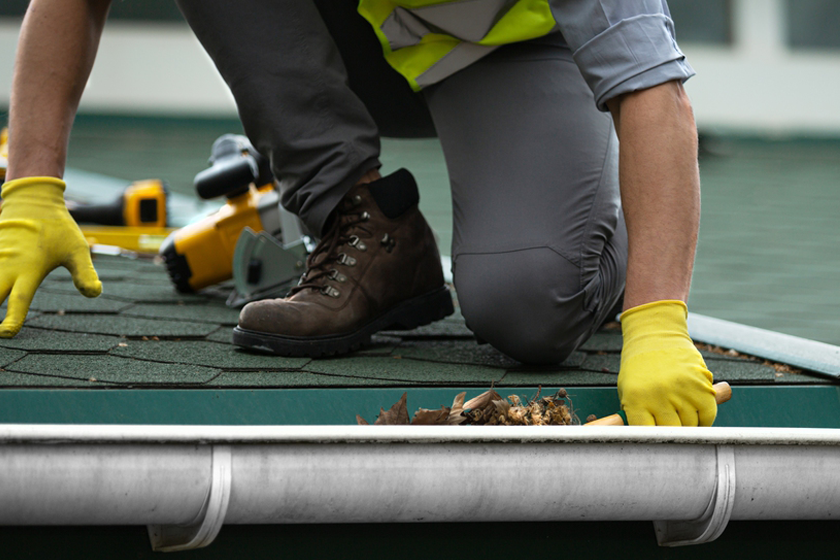Gutter guards are a practical way to reduce debris buildup and keep your gutters flowing smoothly, but they are not maintenance-free. Even with gutter guards installed, leaves, dirt, and small particles can accumulate, blocking water flow and potentially leading to damage. Understanding how to clean gutters with gutter guards is an important step in maintaining your home’s drainage system.
Blocked gutters may cause water to overflow, leading to issues like mold, foundation damage, or rotting fascia. Regular gutter cleaning, even with guards, helps prevent these costly problems. In Maine, where weather conditions can be harsh, keeping gutters in proper condition is especially important to avoid water damage during heavy rain or snowmelt.
Gather Tools and Gear Before Starting
Having the right tools on hand makes cleaning safer and more efficient. A sturdy ladder, gloves, a trowel or scoop, and a bucket for debris are the basics you need. A garden hose with a spray nozzle or a pressure washer helps clear blockages. For extra safety, wear glasses to shield your eyes from dirt or pests that may be hiding in the gutters.
Inspect your ladder for stability and set it on even ground. Keep both feet on the rungs while working and maintain balance. This is important when working at heights. Working with caution is as vital as the cleaning itself.
Step-By-Step Guide To Clean Gutter Guards Properly
Start by positioning the ladder securely near the gutter area you plan to clean. Work in sections, bringing a bucket to collect debris. Use your hands or a scoop to remove leaves, twigs, and buildup resting on top of the guards. Pay close attention to corners and joints where material tends to collect.
After removing visible debris, check the guards for damage. Some types of guards, like foam or brush styles, may need extra attention to clear stubborn dirt. If buildup underneath is significant, you might need to remove the guards temporarily for thorough cleaning.
Once debris is cleared, rinse the gutters with a garden hose. This step clears out smaller particles and ensures water flows freely to the downspouts. If downspouts are clogged, use the hose to flush them out from the top. For persistent blockages, a plumber’s snake can help dislodge debris.
After rinsing, clean the guards themselves. Use water and a soft brush to scrub away grime, taking care not to damage the material. If guards were removed, reattach them securely before finishing. Test the water flow by running water through the system to confirm everything is draining properly.
Regular Maintenance For Lasting Results
Cleaning gutters once or twice a year, particularly after fall or heavy storms, prevents buildup that can compromise water flow. Homes surrounded by trees may need more frequent checks. While gutter guards reduce debris, they do not eliminate the need for routine maintenance. Inspections after harsh weather can catch damage early and keep your gutters working smoothly.
Properly cleaned gutters protect your home’s foundation, siding, and roof from long-term water damage. This preventive care is a cost-effective way to maintain your property and avoid unnecessary repairs.
A Partner You Can Count On
At Monastery Roofing, we understand the importance of keeping your gutters in excellent shape. Whether you need help with gutter cleaning services in Maine or are considering new gutter installations, our experienced team is here to assist. With more than 15 years of experience, we are proud to deliver top-quality craftsmanship to improve your home.
Reach out for professional support today, and we will help you protect what matters most.

